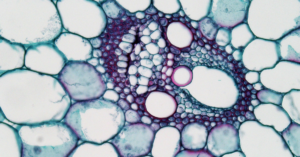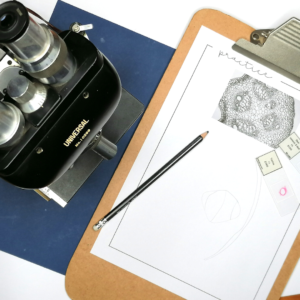Let’s be honest, many students tend to overcomplicate their biological drawings and end up wasting a lot of time. On the other hand, you also get those students who will draw the bare minimum (or even less!).
One thing is for sure, if you are doing biology, you are going to have to draw! Teaching your students good biological drawing skills and technique is so important to help them build confidence in this exciting subject.
It pays off to take some time and work on this important scientific skill.

Start with Basic Rules
Give students a list of basic rules to use when drawing a biological specimen. It helps to have some extra pencils on standby! I always focus on the following rules:
- Use a sharp pencil
- Solid outlines
- No shading
- Draw what you see and pay attention to details like shape
- Your drawing must be large
- Label the necessary structures by drawing label lines using a ruler

Low Power Plan Diagram v High Power Diagram
Students need to understand the difference between a low power plan diagram and a high power diagram when drawing tissues and cells under a microscope.

Low power plan diagrams focus on the distribution of tissues. The diagrams are simple and show outlines only. No individual cells are drawn.
With high power diagrams, students are expected to draw individual cells. These diagrams will include visible cell organelles like nuclei, vacuoles, and chloroplasts. Cell walls are also shown.

Practice!
When it comes to biological drawing skills, practice, practice, practice!
When I first introduce these skills, we start by drawing fruit, vegetables, and leaves. It is easy to set up several stations with different specimens. This gets your students moving and they will end with a variety of diagrams.
When we move on to drawing cells and tissues, I start by giving them photomicrographs to practice from.
After that, we move on to the microscopes. Introducing these drawing skills is much easier if you start by using a digital microscope or a virtual microscope. You can then show your students what they should be drawing. I’m sure all of us have received some drawings of cells that look nothing like anything that should have been on that microscope slide!
Here is a sample of my Drawing Skills packet to use with your students!

Happy drawing!

*contains affiliate links

